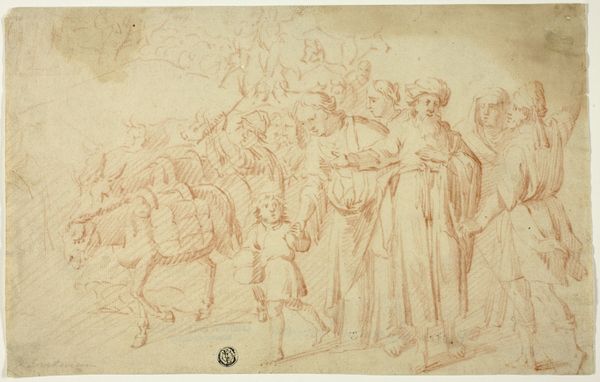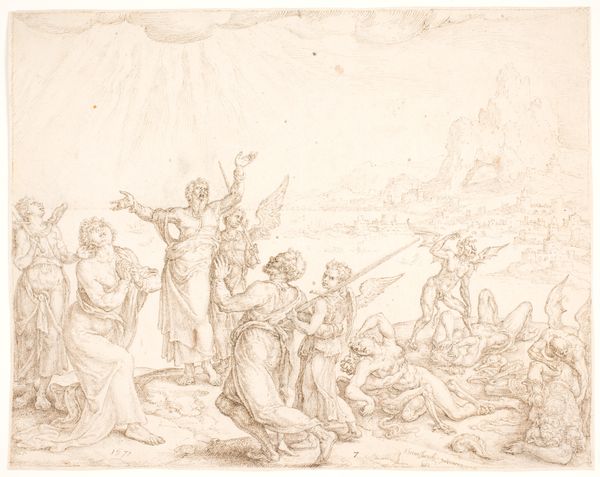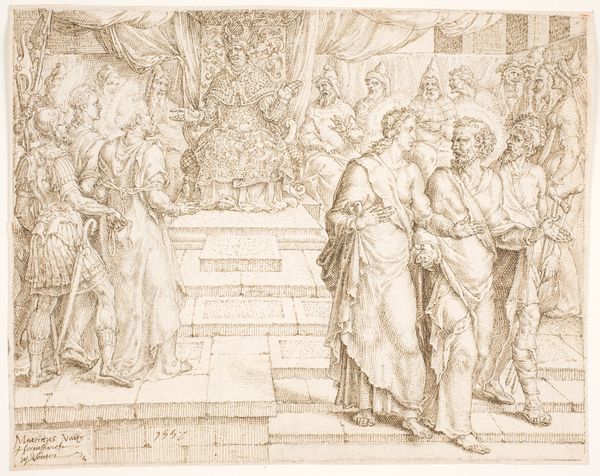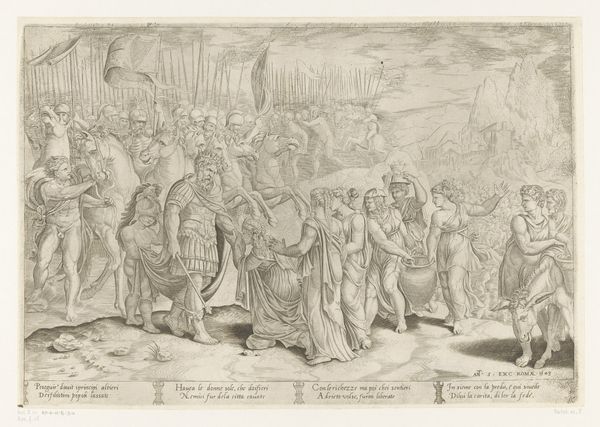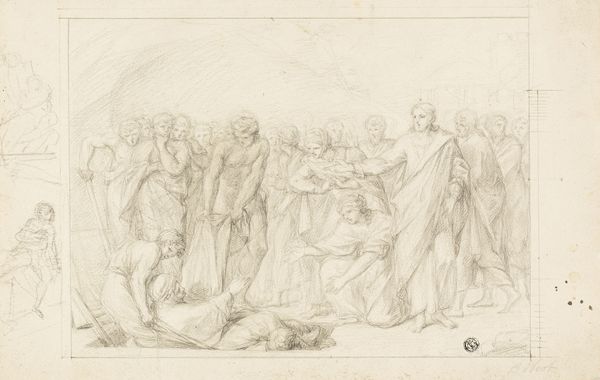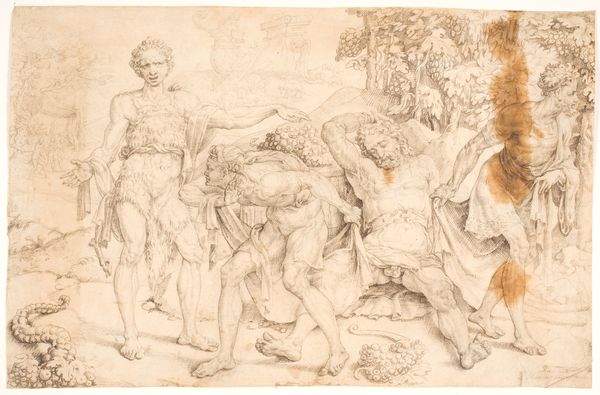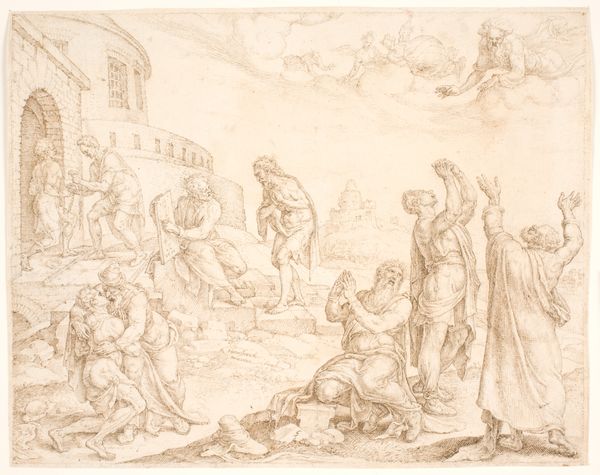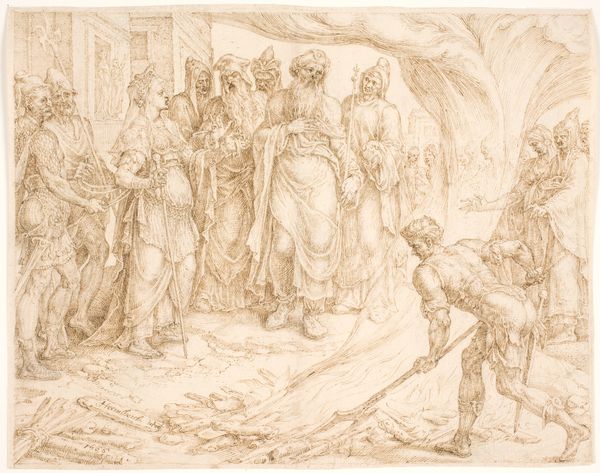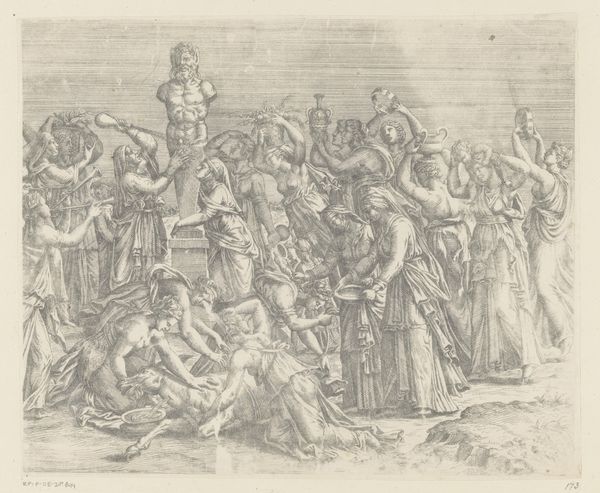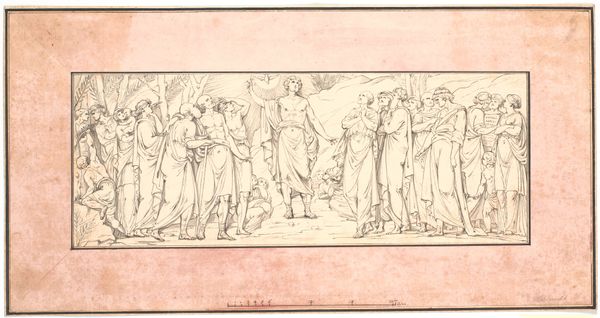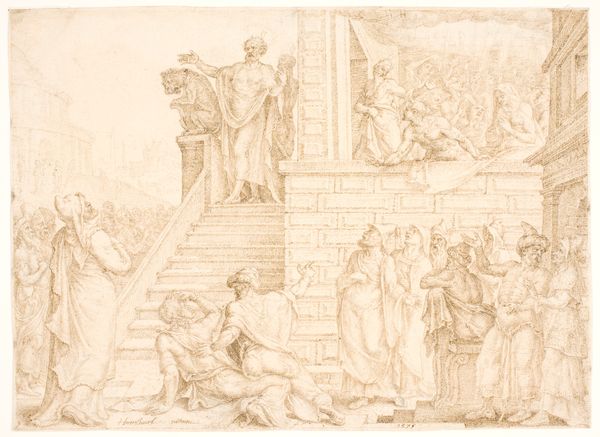
drawing, ink, pen
#
landscape illustration sketch
#
drawing
#
light pencil work
#
ink drawing
#
allegory
#
pen sketch
#
pencil sketch
#
landscape
#
figuration
#
personal sketchbook
#
ink
#
ink drawing experimentation
#
pen-ink sketch
#
sketchbook drawing
#
pen
#
history-painting
#
storyboard and sketchbook work
#
northern-renaissance
Dimensions: 205 mm (height) x 258 mm (width) (bladmaal)
Curator: Well, it’s a striking image! "Ne nos induca (led os ikke)," an ink drawing dating back to 1571, crafted by Maarten van Heemskerck. The work currently resides here at the SMK. What captures you upon first glance? Editor: The lightness, definitely. Despite the density of figures and that looming city in the background, it feels incredibly airy. The subtle gradations achieved through the penwork are quite masterful; there's a real fluidity. Curator: Agreed. The interplay of light and shadow gives it a pronounced ethereal quality. But it’s hard not to notice the socio-political climate shaping such a piece. Consider the Reformation, the religious wars… Van Heemskerck was working amidst considerable turmoil. Editor: Precisely. That’s felt so strongly here. I see the classical influence in the idealized bodies, yet there’s something almost frantic in the upward gaze and gestures of those figures below. Are they beseeching something? Despairing? It evokes a world on the cusp of change. Look how it breaks down at the top into those cloudy apparitions. Curator: Absolutely. Van Heemskerck frequently incorporated allegory into his work, layering it with humanist concerns. This piece reads as both a reflection of, and a plea against, the turbulence of his time. It engages in the popular concern with religious uncertainty. Editor: I’d also venture that the artist leverages a deliberate disjunction between the meticulous rendering of the foreground figures and the hazier backdrop. Is this contrast merely a question of visual hierarchy or could it be communicating something deeper about earthly versus divine realms? Curator: I suspect it is deliberate, speaking to a division between humanity and a remote and unknowable divine sphere. Note, too, the contrast between the adorned women on the left, clearly allegorical figures perhaps related to earthly concerns, and the bare-chested figures at the right in their attitudes of submission and religious awe. Editor: It definitely warrants further exploration, the composition so powerfully draws the eye and invites introspection. I wonder about its original audience and the conversations it ignited. Curator: Indeed. Thank you for drawing my attention to details I have perhaps taken for granted. A fresh perspective enlivens my appreciation.
Comments
No comments
Be the first to comment and join the conversation on the ultimate creative platform.
